Editor’s Note: This post is another entry in the Prepper Writing Contest from John D. If you have information for Preppers that you would like to share and possibly win a $300 Amazon Gift Card to purchase your own prepping supplies, enter today.
In a SHTF situation where you can’t stay in your own home, and moving in with a friend or relative is not an option, what will you do? If bugging out to the wilderness suddenly becomes your only option, will you survive? Probably not for very long, if you believe the experts. Nevertheless, if your survival plan doesn’t include a bug out to the forest option, it should, but coming up with a good plan might be more difficult that you think.
For starters, do you have a reliable bug out vehicle? If your bug out plan has you escaping the city or suburbs in a modern vehicle, you may be in for an unpleasant surprise. Most modern vehicles won’t survive a strong EMP event. You may find yourself traveling on foot, away from a major metropolitan area, in search of food and water. But at least you won’t be alone. When food and water run out, millions of others will be traveling, mostly on foot, away from large centers of population. Even if you have a working vehicle, it may be useless, due to the gridlock created by people and disabled vehicles, all on the same escape routes. You may avoid some of that if you get away quickly, but will you? How much time will pass before you’re packed, and ready to go? Will the roads already be jammed by the time you depart? As time passes, the situation will get worse. Can you imagine what starving, desperate, people are capable of doing? I’m thinking “zombie apocalypse”.
My Bug-out Plan
Understanding the predicament, I don’t have to look any farther than my garage for a solution. My bug out plan doesn’t depend on a full-size vehicle, but I won’t be bugging out on foot either. I suspect that I wouldn’t last very long, with just the items I can carry on my back. Instead, I’ve decided to use my garden tractor (riding lawn mower), pulling a small trailer. Don’t laugh, it’s more practical than it may seem.
- It would probably survive an EMP event.
- It can travel off-road, avoiding traffic jams and bypassing bottlenecks.
- It can pull a small trailer, loaded with essential supplies.
- I can avoid people who may want to harm me, or take what I have.
- I’ll have a 360 degree view, helpful for situational awareness, and if I have to use a firearm.
- I’ll be able to travel to places inaccessible by car, which in theory will make me more secure.
- My getaway will be at a whopping 6 miles per hour, maximum, but it beats walking.

It’s not how fast you bug out, it’s how well you bug out fast
There are drawbacks, of course. I’ll have no shelter from the elements, as I would in a car or truck. My traveling companion will have to ride in the trailer, or walk along side. Perhaps the biggest drawback is that I won’t be able to outrun anyone. For that reason, it’s important to pack and leave quickly, before things get out of hand.
The bug out location I’ve selected is far from the densely populated area where I now live, and is an area that provides opportunities for hunting, fishing, growing crops, and is near a fresh water source. I know what some of you are thinking… A city boy, living in the wilderness, wouldn’t last long. You might be right, but what choice do I have? Since I don’t own a wilderness cabin, or even a camper, how can I best prepare for a situation that forces me to abandon my home? For starters, I’ve compiled a virtual library of information that will be helpful in such a situation. I’ve also purchased some basic survival equipment and supplies. I practice the skills I’ve learned, and I’m a pretty good gardener.
While living in the wild will be a challenge, I first have to arrive there safely. Traveling with a fully loaded trailer screams “Hey look at me! I have food, water, and survival gear!” How do I get to my destination without being robbed or killed? I see two main problems:
- Starving, thirsty, desperate people won’t hesitate to attack me and take what I have.
- Those already settled in, near my bug out location, won’t appreciate the competition for limited resources.
To make matters worse, the noise of the tractor will announce my presence. In either case, one bullet could ruin my day.
Bugging out is risky, but I’m thinking of a scenario where I have no choice. I’ll improve my odds somewhat by getting away quickly, before anarchy is commonplace. To do that, all of my things need to be organized, and ready to toss into the trailer. This includes items that are protected from EMP’s. The list that I’ve already prepared helps to make sure that I don’t forget anything.

As I travel, I expect to cross paths with others who are also bugging out. The majority of the people I encounter will be just like me, trying to survive. Many of them will be traveling on-foot, with very limited supplies. My survival odds will improve if I join a like-minded group of travelers, or convince others to travel with me. I’ll bring extra food to share. Travelling with a well-fed and motivated group should help to keep the criminal element away. I’m not trying to be a group leader, or a macho tough-guy, but just one of the many people fleeing an area that has become unsafe. Being armed, and avoiding likely trouble spots, will also help.
With luck, I’ll make it to my bug out spot, probably with a number of other people who’ll soon become my neighbors. As I settle in, I’ll begin to implement a plan that might be described as “Living in the Wilderness, but Not Wilderness Living”. After food and water, my top priority will be the construction of a substantial shelter. As Pat Henry put it “your tent offers zero protection from a sharp stick, much less bullets.” I’ll use modern tools and technology to deal with challenges that come with living in the wild. I’ll have lights when and where I need them, and I’ll use sensors to alert me to intruders, and garden pests. Some of the pests that would otherwise be a threat to my garden, will become food, if I can kill or capture them. My garden tractor-trailer combination will continue to be an asset, as long as gasoline is available. I’ll be able to haul whatever useful items I can find, including building materials, firewood, and water. It’s likely that some of my traveling companions will become the nucleus of a survival group, and the benefits of belonging to a group are many. One could be hunting or fishing, while another guards the supplies and equipment. One could be on the lookout for intruders, while another prepares food, or tends to a garden. One could sleep, while another stands guard. Portable two-way radio equipment, as well as low-tech devices, such as whistles, may be used to alert group members to emerging threats.

Plano 1919 Sportsman’s Trunk
My trailer is approximately 48” by 30”. If stacked 30” high, I’ll have about 25 square feet of cargo space. My supplies will be covered with a tarp, protected from rain and wind. My supplies will be similar to those mentioned in a recent TPJ article by Pat Henry. Pat suggests using 3 plastic containers. One is for food, another for shelter, and the third for cooking, cleaning, hygiene, health, and miscellaneous supplies. Those containers account for about 15 square feet, and mine will be similar, leaving me with at least 10 additional square feet. Because I’m thinking long-term survival, I’ll pack clothes and bedding for all weather conditions. I’ll use the additional space for items that will help me survive in the long-run. Included will be the components of a small solar electric system that can be easily reassembled at my destination. I’ll have lights, and a variety of electrical devices that can be powered by the solar electric system. Sensitive electrical items are pre-packed, wrapped in aluminum foil and insulated from each other, which is the equivalent of a Faraday Cage. The ability to use power tools will make construction of a shelter much easier.
Because of the trailer’s small size, I look for ways to conserve precious space. I won’t bring bulky items, like table lamps. Instead, I’ve assembled small and simple light fixtures. I won’t bring a pedestal fan, or even a tabletop fan. Instead, I’ll use small muffin fans, similar to those you find in computers. I’ll mount them on frames, made from pvc tubing, that can be disassembled, saving space when packing. I’ll make good use of paracord, rope, and plastic sheeting. I need not carry books, and volumes of survival literature, because all of those things have been scanned, and stored on a KindleFire. Likewise, carrying a large quantity of water is not practical. I don’t have space for large containers. Instead, I’ll pack several collapsible water containers. I won’t bring a propane stove, or even a charcoal grill, but I will bring a grill top. I’ll assemble a fire pit with stones that I’ll find at my bug out location, and finish it off with the grill top. I’ll pack my cast iron Dutch oven, overlooking my concern for weight, just this one time. Once settled in, my tractor-trailer’s ability to haul things contributes to my bartering opportunities.

The bug out location I’ve selected will be a 7 to 8 hour trip by garden tractor. I have to make sure I have enough gasoline, but my preliminary estimates indicate that I can make it with just the capacity of a full tank, and a full 2 ½ gallon container. I’ll also carry a tube for siphoning, in the event I’ll need to do that. I’ll be carrying a shovel and an axe, helpful if I get stuck or need to clear a path, and very useful when I’ve settled in at my bug out location.
I’ll have the ability to collect and store rainwater. I’ll be prepared to filter water, and boil it, making it safe for drinking. My bug out supplies will include heirloom and hybrid seeds for food crops. Traveling light is an important consideration, and for that reason I’ve created a separate list of items to acquire, once I’m settled in at my bug out location. For the most part, those additional items will make life more comfortable, but are not essential for survival.
Once I’ve settled in at my bug out destination, my first priority will be a sustainable source of food. I’ll start a garden of course, but I’ll need to have other food while I’m waiting for my crops to mature. My bug out supplies include a live trap for small animals, but it is safe to assume that others will quickly decimate local population of rabbits, squirrels, and other edible creatures. My bug out location is near a large lake, and I suspect that I’ll be able to catch fish.
I’ve used Pat Henry’s food list as a starting point, but modified it to reflect my own tastes and preferences. In an effort to avoid bland meals, I’ll pack items such as olive oil, spices, sauces, flour, and corn meal. My list for shelter is similar to Pat’s, but I’ve added an air mattress for additional comfort. I’ll have construction tools, and plan to make tent-living a very temporary arrangement. My list for cooking, cleaning, and hygiene is different from Pat’s list, because I put more emphasis on long-term survival. While I will pack items such as soap and dish detergent, I’ll place a high priority on reusable items, such as wash cloths and towels. Instead of a propane stove, I’ll pack a rocket-stove, and reusable cooking supplies. I’ll have a solar-heated camp shower, wash basins, and collapsible containers for water. I’ll have a good first-aid kit, a variety of medicine, alcohol, bug spray, toilet paper, and other items for health and hygiene. One container, perhaps a backpack, will be for items that need to be easily and quickly accessible. Items in this container will include a flashlight, weapons, maps, a compass, binoculars, cash, a lighter, a KindleFire, snacks, a pocket knife, basic tools, and a rain parka.
My “electronics” box will include all of the components for a small solar electric system, except the solar panels and batteries. It will include test equipment, extension cords, power strips, lights and light fixtures, fans, portable alarms, an AM/FM radio, and a GPS device.
Items that will be packed separately include tools, solar panels (mounted on a hinged aluminum framework), batteries (for the solar electric system), weapons and ammo, live trap, gasoline container, tackle box with fishing supplies, shovel, ax, rake, grill top, and a jump starter (includes tire pump and light). I’ll have the tools and supplies needed to make repairs to the tractor and trailer tires.
After I’ve set up camp I’ll be on the lookout for anything that might be useful, such as a propane stove with a full propane tank, table and chairs, buckets, tools, food and water. If I can find them, I’ll increase my stockpile of disposable items, such as paper towels, zip-lock bags, trash bags, aluminum foil, toilet paper, soap, dish detergent, laundry detergent, insect repellent, toothpaste, shaving cream, alcohol, and other items for health and hygiene. I’ll also stock up on firewood and tinder.

Perhaps the most important item I hope to acquire after I’ve settled in, is an energy-efficient chest freezer. In the event that I have success hunting, fishing, trapping, or growing crops, the freezer will provide an easy way to preserve food. Not needing to find and process food everyday will give me opportunities to rest, and attend to other aspects of survival. The smallest of the chest freezers on the market today are very energy-efficient, meaning that they can be powered by a small off-grid solar electric system. According to the energy-guide tag, 600 watt-hours per day is required for a 5 cubic foot chest freezer. I can get that much power with just 2- 100 watt solar panels, and 2 – 100ah batteries. My system will be a little larger than that, to accommodate the other things needing power, and for extended periods of cloud cover.
Cold Weather Considerations:
Where I live, the months of December through February can include some very cold and nasty weather. Extreme weather may force me to deal with the danger, and postpone bugging out. I may instead choose to make my home as secure as possible, and prepare to defend it. Those traveling through my neighborhood would also be susceptible to extreme weather, perhaps giving me a bit of an advantage. If I’ve already bugged out, and set up camp in advance of cold weather, preparing to survive cold conditions will be a high priority. This includes the construction of a substantial shelter, and a way to provide heat.
The Long Run:
In the event that federal and state government no longer exist, law and order will be maintained at a local level, by an assembly of the people of that area. A protective force can be created, and guard duties shared. Efficiency can be realized in areas such as food production and cooking. Those with special skills will be highly revered, and will serve the entire community. Bartering will be commonplace.
I don’t expect my wilderness life to last more than a couple of years. In a serious SHTF situation, many people will die off from lack of food, or simply from the inability to survive without the conveniences we take for granted today. If that happens, there will be plenty of empty homes to move into. I would choose one with a fenced back yard, to help protect my food source. Most of my food will come from my garden, and perhaps some fish, chicken and rabbit.
Summary:
If I can’t safely stay in my own home, which is at the edge of a big city, or move in with someone else, far from a densely populated area, moving to the forest may be my only option. I need to be ready to bug out quickly and travel safely. I’ll need to bring the appropriate equipment and supplies. And finally, I need to be able to survive wilderness living. I’ll have to depend upon my hunting, trapping, fishing, and gardening skills. My prepping includes the equipment and knowledge to do those things. I don’t expect it to be easy. The competition for limited resources will be fierce, and not everyone will be honest and ethical. Still, I plan for a comfort level far exceeding that of tent camping. I applaud those who can live in the forest with only a knife and the clothes on their back, but I can’t do that.
Perhaps the best things I have are a list, and a plan. I don’t depend upon a modern vehicle, since impassable roads, or an EMP event, could stop me dead in my tracks. My pack-out list helps to ensure that I’ll bring the essentials, while not being overloaded with items I can do without. My extensive database of information will be useful in the event of a medical emergency, or other unexpected circumstances. Moving quickly, with a destination in mind, might prevent me from becoming a victim of the lawlessness that would likely follow a SHTF situation. Getting to my destination quickly means that I’ll also be able to “scavenge” more quickly than some, and acquire useful stuff before it’s all gone. Banding together with trust-worthy, like-minded others may offer the best odds for survival.
John D
. How prepared are you for emergencies?
#SurvivalFirestarter #SurvivalBugOutBackpack #PrepperSurvivalPack #SHTFGear #SHTFBag




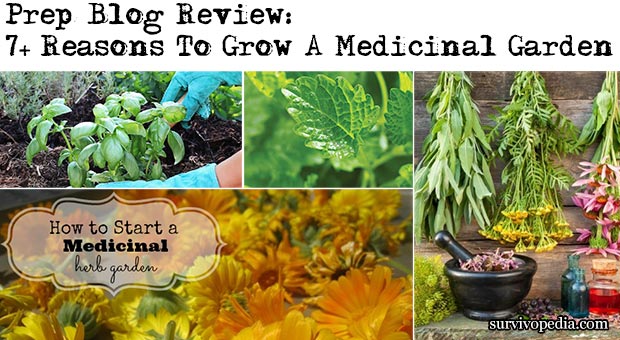
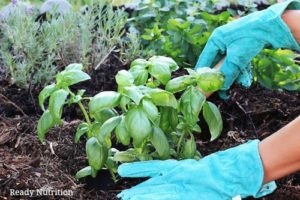 “Growing medicinal plants are a great way to ensure garden sustainability and more notably, have access to natural medicine when you need it most. When I introduced more herbs in my garden, I noticed it had a profound impact on the vegetables and fruits I was growing. It also encouraged beneficial insects and birds to visit my garden and this helped cut down on plants being eaten.
“Growing medicinal plants are a great way to ensure garden sustainability and more notably, have access to natural medicine when you need it most. When I introduced more herbs in my garden, I noticed it had a profound impact on the vegetables and fruits I was growing. It also encouraged beneficial insects and birds to visit my garden and this helped cut down on plants being eaten.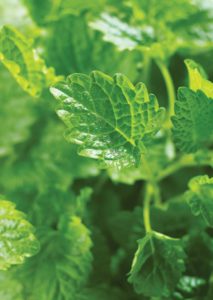 cuts, infections, pain, muscle spasms, anxiety, poor digestion and insomnia.
cuts, infections, pain, muscle spasms, anxiety, poor digestion and insomnia. “Medicinal plants grown in your own gardens can reduce your dependence on drugs, if not completely eliminate them. But growing random herbs with medicinal properties doesn’t help.
“Medicinal plants grown in your own gardens can reduce your dependence on drugs, if not completely eliminate them. But growing random herbs with medicinal properties doesn’t help.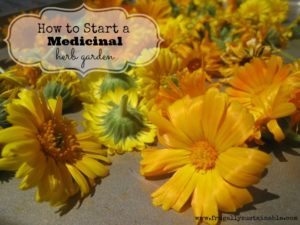 because of it.
because of it.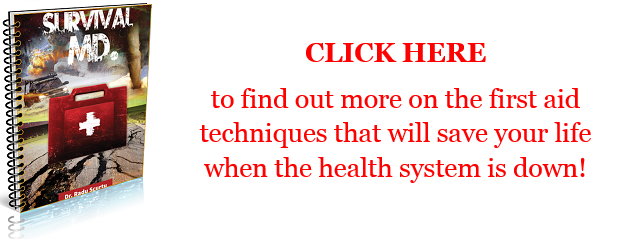



 Mmm, sounds yummy, right? We’re not just talking dehydrated/dried veggies here. Desiccated vegetables are a combination of starchy veg and leafy root veggies, either minced and mixed up or layered, that are pressed under high pressure to remove moisture.
Mmm, sounds yummy, right? We’re not just talking dehydrated/dried veggies here. Desiccated vegetables are a combination of starchy veg and leafy root veggies, either minced and mixed up or layered, that are pressed under high pressure to remove moisture.


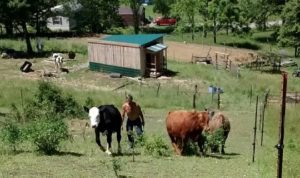 Want to avoid the premium store prices and horrible, toxic food chemicals that can make you sick?
Want to avoid the premium store prices and horrible, toxic food chemicals that can make you sick?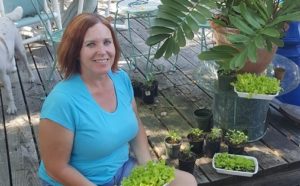 For instance, see all of those tomato and pepper plants over there? I made the mistake of assuming that because I bought seeds from the Dollar Store – 50 cents each – that I’d be lucky if a quarter of them grew, so I planted them ALL.
For instance, see all of those tomato and pepper plants over there? I made the mistake of assuming that because I bought seeds from the Dollar Store – 50 cents each – that I’d be lucky if a quarter of them grew, so I planted them ALL.










